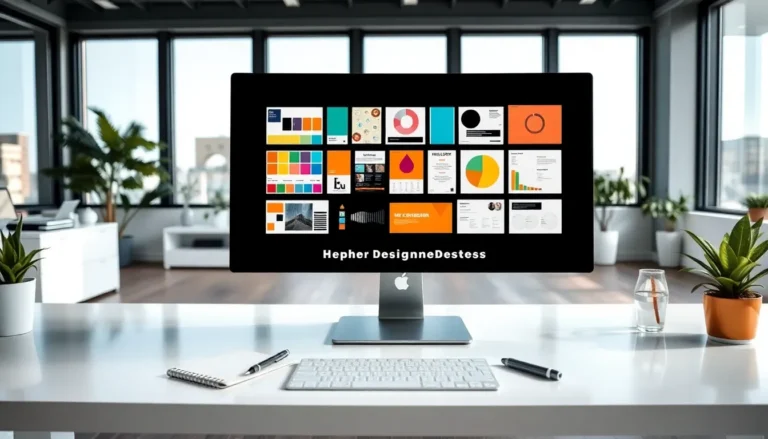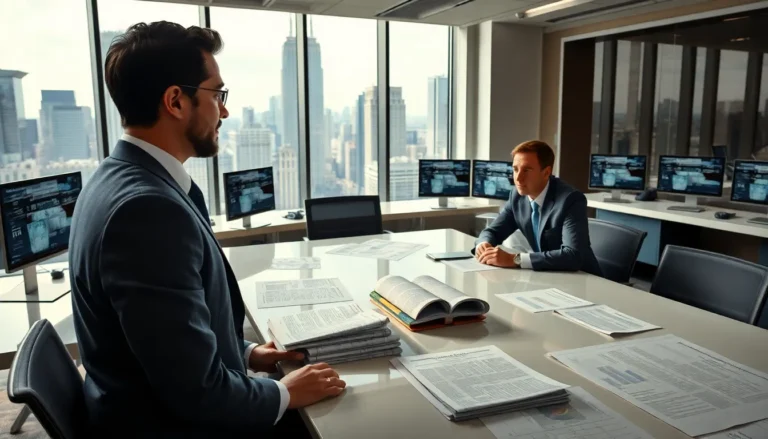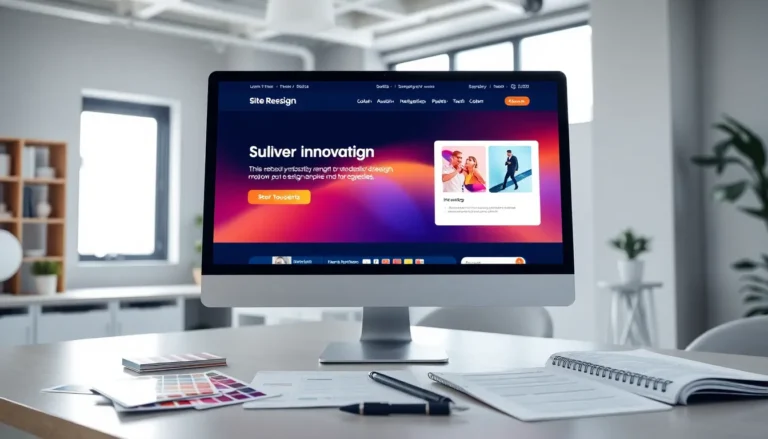Table of Contents
ToggleDesign is everywhere, from the sleek interface of your favorite app to the comfy chair you plop down in after a long day. But what exactly goes into these creative wonders? Understanding design concepts is crucial for everyone in the creative industry and even those simply trying to appreciate good design. Ready for a crash course filled with humor and insight? Buckle up: this journey into the world of design will be both informative and mildly entertaining.
Understanding Design Concepts

Design concepts act as the framework or blueprint that guides the creative process. These concepts inspire and shape not just the final product, but how it connects with its audience. Harmonizing functionality with aesthetics, design concepts lend direction to the creation of anything from buildings to websites. In essence, they provide clarity in chaos, allowing designers to transform fuzzy ideas into crystal-clear visuals.
Types of Design Concepts
When diving into the world of design concepts, it helps to categorize them into types. Three major categories often stand out:
Visionary Design Concepts
Visionary design concepts push the boundaries of conventional thinking. They’re imaginative and often futuristic, focusing on what could be rather than what is. For instance, concepts like smart cities illustrate how technology can reinvent urban living. Designers dream big, contemplating extraordinary possibilities in this category.
Functional Design Concepts
In stark contrast, functional design concepts prioritize usability and efficiency. Think about your favorite kitchen gadgets: they’re designed to make cooking faster and easier. The simplicity of a Swiss Army knife serves as an excellent representation of this concept. Each tool efficiently serves a specific function, embodying the principle of “form follows function.”
Aesthetic Design Concepts
Last but certainly not least, we have aesthetic design concepts. These are all about beauty, involving color palettes, shapes, and visual harmony. The layout of a high-end fashion magazine is a prime example, where every detail is meticulously chosen to create visual allure, enhancing the reader’s experience.
Notable Examples of Design Concepts
Several design concepts have left an indelible mark on various fields. Here are a few notable examples:
- Apple’s Product Design: The company revolutionized how technology is experienced. Every product, from its computers to smartphones, embraces a seamless blend of aesthetics and functionality.
- IKEA’s Flat-Pack Design: This concept is not only innovative but practical, turning complicated assembly into child’s play, while keeping costs down.
- Dyson’s Vacuum Technology: It disrupted the cleaning industry with its bagless design and sleek appearance, showcasing the power of innovative engineering paired with a chic aesthetic.
Each example demonstrates how effective design concepts can drive success and capture consumer attention.
Real-World Applications
Design concepts are not just theoretical: they find application everywhere. For instance, automotive design relies heavily on aerodynamics for fuel efficiency while also ensuring aesthetic appeal and user comfort. In the realm of interior design, concepts influence everything from spatial layouts to color swatches chosen for a room.
Web design is another area where strong design concepts shine. The use of grids, responsive layouts, and user-centric design frameworks highlights how digital experiences depend on these foundations to engage users effectively. In every case, a well-thought-out design concept can elevate the entire experience.
Benefits of Implementing Strong Design Concepts
Stronger design concepts breed multiple advantages, including:
- Enhanced User Experience: Good design means intuitive navigation, improved satisfaction, and an overall appeal that keeps users engaged.
- Increased Brand Recognition: Consistent and coherent design helps establish a brand identity that resonates with the target audience.
- Better Functionality: Strong design concepts lead to efficient product usability, addressing user needs more effectively.
- Cost-Efficiency: Time spent in the initial design phase can save resources down the line, avoiding costly revisions and ensuring aligned objectives among stakeholders.
When companies invest in strong design principles, they see tangible improvements across multiple dimensions of their brand.







